This article was co-authored by Francisco Gomez and by wikiHow staff writer, Janice Tieperman. Francisco Gomez is the Head Coach at the FIT Potato Gym, a training gym established in 2001 in the San Francisco Bay Area. Francisco is a former competitive runner who helps endurance athletes train for major marathons like the Boston Marathon. Francisco specializes in Injury Rehab, Flexibility, Marathon Training, and Senior Fitness. He has a B.S. in Nutrition and Exercise Physiology & Running.
There are 13 references cited in this article, which can be found at the bottom of the page.
This article has been viewed 7,768 times.
Long distance running is a rewarding activity that helps you build stamina while getting cardiovascular exercise. Whether you’re trying to change up your workout routine or preparing for a big race, long distance running can set you on a path to achieve your fitness goals. After you’ve developed a comfortable routine for yourself, focus on increasing your speed and distance. With a few adjustments to your running form and diet, you’ll be ready to start your journey as a long distance runner!
Steps
Developing a Comfortable Routine
-
1Slip on a comfortable pair of running shoes. Look in your closet or stop by the shoe store to pick up a nice pair of sneakers. Look for shoes with thick, durable soles that can survive long runs, so you don’t need to keep replacing them. When you try on the sneakers, check that they fit comfortably, and that your toes and feet don’t feel squeezed or pinched around the shoe.[1]
- Double check your shoe size before investing in a new pair of sneakers.
- If you’re shopping for new shoes, look for sneakers that are designed for runners.
-
2Warm up for 5 minutes before you run. Get your body moving by performing a few easy exercises. Try marching in place, walking briskly, climbing stairs, or lifting your knees. Focus on warm ups that help your body adjust to moving around, so you won’t pull any leg muscles during your workout.[2]
- Your warm ups don’t have to be intense—just try to get your blood pumping.
Advertisement -
3Build up your endurance by running twice a week.[3] Go for a run at the beginning of the week, then give yourself a day or so to rest before exercising again. On your running days, alternate between running and walking to build your stamina. As you continue training, try running for the majority of your workouts.[4] If you feel up to it, try exercising for around 30 minutes on your scheduled running days.[5]
- Don’t overwork yourself! If you’re new to long distance running, spend more time walking than running.
- If you’d prefer a change of scenery, try running outside! If you don’t mind running in place, consider using a treadmill instead.
-
4Run for a comfortable amount of time, not a set distance. When you’re first starting out, don’t set a specified distance as your workout goal. Instead of trying to run for 2 total miles, try running at a consistent, comfortable pace for 30 minutes. Focus on building your endurance in regimented workouts; once you’ve developed some basic stamina, you can try running for a set distance.[6] [7]
- For instance, try working out for 30 minutes on Monday and Wednesday. On Friday, you can try running 1 mile (1.6 km), or whatever distance you feel comfortable with!
- Consider alternating between running and walking when you’re first starting out.
-
5Aim for a comfortable mile pace starting out. Don’t start off your runs with a fast speed; instead, choose a slow, manageable pace that doesn’t leave you exhausted. Instead of thinking about your time, focus on how much ground you’re covering. If you set an achievable goal for yourself, you’ll be able to make more progress![8]
- Don’t expect to run a 6-minute mile in the beginning of your training. This kind of achievement will take time, practice, and developed endurance to accomplish.
- Try not to overexert yourself on a run! Instead, continue at a comfortable, steady pace.
Increasing Your Speed and Distance
-
1Perform different running exercises to increase your speed and stamina. Switch up your running routine with different drills, exercises, and workouts. Instead of doing the same workout each day, opt for interval exercises and longer distance runs to build endurance.[9]
- If you’re doing the exact same training regimen each day, you might not feel motivated to train.
-
2Complete 1-2 sessions of interval training each week to build your stamina. Choose a large, expansive area to work out, like a track field or hiking trail. To start the drill, run about 50 metres (55 yd), then walk or jog 50 metres (55 yd). Continue increasing the running increments by 50 metres (55 yd), giving yourself 50 metres (55 yd) to walk between each rep. Once you’ve run 250 metres (270 yd), feel free to stop the drill.[10]
- Interval training is a great way to improve your stamina for long distances.
- If you want to challenge yourself, try running in intervals across hilly, inconsistent terrain.
-
3Build endurance by trying 3-5 explosive hill sprints. Use a hill or inclined treadmill as your training space. For 10-20 seconds, run at full speed up this incline. After you complete 1 rep, give yourself 3-5 minutes to walk at a comfortable pace and completely catch your breath. Repeat this sprinting and recovery process at least 3 times, so you can start building stamina for longer runs.[11]
- You don’t have to use an especially steep hill for this drill. However, if you want to challenge yourself, you can try sprinting up steeper inclines.
- Since this is an intensive workout, only do this exercise once each week.
-
4Increase your running workouts over several weeks. As you continue your training, begin to add another running workout to your schedule.[12] For around 3 days each week, try running at a steady pace for 30 minutes. As you build stamina, work on increasing your speed during these workouts.[13]
- For instance, create a training schedule where you run on Monday, Wednesday, and Friday. While you’re still building stamina, feel free to alternate between a running and walking pace.
Tip: Dedicate 1-2 days each week to exercise for 30 minutes at a walking pace. Space these walking workouts between your running days, so you don’t overexert yourself!
-
5Run or walk a longer distance 1 time each week. If you’re training for a larger race, try building your stamina with large, long distance runs. Instead of running for a certain amount of time, use a pedometer or other device to tell you when you’ve run 1-3 miles. Set a goal that fits within your current endurance levels, and that feels manageable.[14]
- If you’re just starting out as a runner, try running 1 mile (1.6 km) at the end of the week. If you’re more experienced, try running 2-3 miles.
- The amount you run may depend on the race that you’re training for.
-
6Register for a race to give yourself a long-term running goal. Choose an end goal for your workouts, whether it’s big or small. If you’re looking for more motivation to train, register for a longer race, like a 5K, 10K, half marathon, or full marathon. If you have a clear goal in mind, you can build a training schedule around it![15]
- If you’re looking to start small, try shortening your running pace to a 7 or 8 minute mile.
- If you’re aiming to run a marathon, you’ll need a more intense training regimen.
-
7Give yourself at least 1 day to rest. Declare 1 day of the week to be exercise-free, so you can focus on letting your body relax and recover. While it’s tempting to continually build your endurance, you don’t want to do so at the expense of your physical health. Instead, focus on your workout plan for the upcoming week![16]
- If you get a strain or pulled muscle, you won’t be able to run at all.
Honing Your Running Form
-
1Keep your eyes forward whenever you go for a run. Stay alert and focused whenever you start your workout. Whether you’re running outside or on a treadmill, center your gaze on what’s directly in front of you. Don’t look at the ground, or turn your head from side to side, as this could make you collide with an obstacle. [17]
- Keeping your eyes forward helps to balance out the rest of your posture.
-
2Relax your shoulders to improve your breathing. Don’t tense or raise your shoulders when preparing for a run, as this makes it harder for you to take deep, effective breaths. Instead, keep your shoulders down and back to get rid of any hunch in your form. If you run with tensed, hunched shoulders, you’ll run out of breath more easily.[18]
- Try taking a deep breath with your shoulders tense and hunched. Then, relax your shoulders, and take another breath. You should be able to feel the difference!
-
3Swing both of your arms while bending them at a right angle. Build momentum as you run by angling each arm by 90 degrees. As you run, propel your bent arms forward and backward. Focus on pushing yourself forward as you run, instead of moving your arms from side to side. With your arms bent, you can maintain a swift, steady pace.[19]
- When you move your arms from side to side, you don’t create any momentum.
-
4Increase your height while you run. Try making yourself as tall as possible, stretching your spine as you go. Use your feet to create momentum, springing your body upwards with each step. Whenever your feet push off the ground, use that force to straighten your spine and make yourself taller as you run.[20]
- This technique is known as “running tall,” and it prevents you from collapsing while you run.
-
5Lean forward to keep your body balanced. Maintain the momentum you’ve created by leaning your body slightly forward. Focus your weight onto the balls of your feet so you can run in an effective, balanced manner. If your foot strikes fall on the back of your heels, your running stride will be unbalanced and ineffective.[21]
- Since you’ll be running across long distances, you want to keep your form as balanced as possible.
- Don’t bend forward at a 45-degree angle. Instead, just lean forward slightly, so you can comfortably place your weight in the middle of your feet.
Adjusting Your Diet
-
1Stay hydrated before, during, and after your runs. Try to get in the habit of drinking water throughout the day. When you wake up, drink 1 glass of water. About 1-2 hours before you plan on going for a run, drink about 16 fluid ounces (470 mL). As you run, stay hydrated with at least 4 sips of water every 15-20 minutes. Once you’ve finished your workout, try consuming around 16 to 24 fluid ounces (470 to 710 mL) of fluids.[22]
- After your workout, recovery drinks and smoothies count as fluids.
- If you’re dehydrated you won’t be able to run as efficiently.
-
2Wait 2 hours to run after eating a meal. Take note of the exact time you eat breakfast, lunch, or dinner. While you want to go for a run right away, try to resist the temptation. If your stomach is still full when you exercise, you could suffer from stomach cramps.[23]
- Wait about 30 minutes after eating a snack before you go for a run.
-
3Load up on pasta, bread, dairy, and other carbs. Prepare for your run by stockpiling energy in the form of carbohydrates. If you’re planning on going for a run in the evening, opt for a spaghetti dinner, or another dish that’s full of carbs. Additionally, increase your carb intake by reaching for yogurt, milk, cheese, and other nutritious dairy products.[24]
- While carbs are an effective way to power through a run, make sure you’re eating from all the main food groups.
-
4Eat healthy fats by adding fish, red meat, seeds, and avocado to your diet. Look for natural, nutritious foods that you can add to your diet, whether it’s for a meal or snack. Center your meals around fish or red meat, which contain lots of healthy fats. If you don’t eat meat, opt for seeds and avocado, which are rich with the fatty nutrients that you need.[25]
- Monounsaturated, polyunsaturated, and saturated fats are all important nutrients that help nourish your body for a run.
- These fats provide you with endurance for long runs.
-
5Include 3-5 ounces (20-30 g) of protein with each meal. Opt for chicken, pork, beef, fish, and other foods that are high in protein, so your body can feel supported and energized throughout your run. If you’re male, aim to eat 4-5 ounces (25-30 g) of protein in each meal; if you’re female, opt for 3 oz (20-25 g). If you’re a vegetarian, choose beans, soy, barley, and quinoa instead.[26]
Tip: Carbohydrates, healthy fats, and protein are equally important nutrients for runners. Make sure that your diet includes all 3!
-
6Opt for lots of fruits and vegetables on a daily basis. Supplement your body with extra carbohydrates and other valuable nutrients by snacking on a variety of produce items. If you’re looking for foods with anti-inflammatory benefits, go for berries, pitted fruits, kale, red bell peppers, and sweet potatoes. If you’re looking for an overall boost, try drinking 0.5 litres (17 fl oz) before going for a run.[27]
- If you’re prone to GI issues, don’t eat a lot of fruits and vegetables 1-2 days before a big run.
Community Q&A
-
QuestionHow can I improve my speed and distance?
 Francisco GomezFrancisco Gomez is the Head Coach at the FIT Potato Gym, a training gym established in 2001 in the San Francisco Bay Area. Francisco is a former competitive runner who helps endurance athletes train for major marathons like the Boston Marathon. Francisco specializes in Injury Rehab, Flexibility, Marathon Training, and Senior Fitness. He has a B.S. in Nutrition and Exercise Physiology & Running.
Francisco GomezFrancisco Gomez is the Head Coach at the FIT Potato Gym, a training gym established in 2001 in the San Francisco Bay Area. Francisco is a former competitive runner who helps endurance athletes train for major marathons like the Boston Marathon. Francisco specializes in Injury Rehab, Flexibility, Marathon Training, and Senior Fitness. He has a B.S. in Nutrition and Exercise Physiology & Running.
Fitness Coach You can increase your total distance or speed by 10% each week to help you improve your times.
You can increase your total distance or speed by 10% each week to help you improve your times. -
QuestionWhat distance should I run when I'm first starting off?
 Francisco GomezFrancisco Gomez is the Head Coach at the FIT Potato Gym, a training gym established in 2001 in the San Francisco Bay Area. Francisco is a former competitive runner who helps endurance athletes train for major marathons like the Boston Marathon. Francisco specializes in Injury Rehab, Flexibility, Marathon Training, and Senior Fitness. He has a B.S. in Nutrition and Exercise Physiology & Running.
Francisco GomezFrancisco Gomez is the Head Coach at the FIT Potato Gym, a training gym established in 2001 in the San Francisco Bay Area. Francisco is a former competitive runner who helps endurance athletes train for major marathons like the Boston Marathon. Francisco specializes in Injury Rehab, Flexibility, Marathon Training, and Senior Fitness. He has a B.S. in Nutrition and Exercise Physiology & Running.
Fitness Coach Try measuring your pace rather than your distance. For example, run at whatever pace you can maintain for about 30 minutes. If you start feeling too exhausted, you might be running too fast. As you keep practicing, you'll get better and feel more comfortable at faster speeds and longer distances.
Try measuring your pace rather than your distance. For example, run at whatever pace you can maintain for about 30 minutes. If you start feeling too exhausted, you might be running too fast. As you keep practicing, you'll get better and feel more comfortable at faster speeds and longer distances.
References
- ↑ https://www.nhs.uk/live-well/exercise/running-tips-for-beginners/
- ↑ https://www.nhs.uk/live-well/exercise/running-tips-for-beginners/
- ↑ Francisco Gomez. Fitness Coach. Expert Interview. 24 October 2019.
- ↑ https://www.nhs.uk/live-well/exercise/running-tips-for-beginners/
- ↑ https://www.mayoclinic.org/healthy-lifestyle/fitness/in-depth/5k-run/art-20050962
- ↑ Francisco Gomez. Fitness Coach. Expert Interview. 24 October 2019.
- ↑ https://www.mayoclinic.org/healthy-lifestyle/fitness/in-depth/5k-run/art-20050962
- ↑ https://www.womensrunning.com/2016/02/training/how-fast-should-i-run_54915
- ↑ https://www.mensjournal.com/health-fitness/best-running-workouts-increase-speed-and-endurance/
- ↑ https://www.mensjournal.com/health-fitness/best-running-workouts-increase-speed-and-endurance/
- ↑ https://www.mensjournal.com/health-fitness/best-running-workouts-increase-speed-and-endurance/
- ↑ Francisco Gomez. Fitness Coach. Expert Interview. 24 October 2019.
- ↑ https://www.mayoclinic.org/healthy-lifestyle/fitness/in-depth/5k-run/art-20050962
- ↑ https://www.mayoclinic.org/healthy-lifestyle/fitness/in-depth/5k-run/art-20050962
- ↑ https://www.broadsheet.com.au/national/active/article/beginners-guide-long-distance-running
- ↑ https://www.nytimes.com/guides/well/how-to-start-running
- ↑ https://www.nhs.uk/live-well/exercise/how-to-run-correctly/
- ↑ https://trailrunnermag.com/training/injuries-and-treatment/good-posture-for-runners.html
- ↑ https://www.nhs.uk/live-well/exercise/how-to-run-correctly/
- ↑ https://trailrunnermag.com/training/injuries-and-treatment/good-posture-for-runners.html
- ↑ https://www.nhs.uk/live-well/exercise/how-to-run-correctly/
- ↑ https://www.hss.edu/playbook/staying-hydrated-while-running/
- ↑ https://www.bbcgoodfood.com/howto/guide/what-eat-your-run
- ↑ https://www.nytimes.com/guides/well/healthy-eating-for-runners
- ↑ https://www.nytimes.com/guides/well/healthy-eating-for-runners
- ↑ https://www.nytimes.com/guides/well/healthy-eating-for-runners
- ↑ https://www.nytimes.com/guides/well/healthy-eating-for-runners
- ↑ https://share.upmc.com/2015/05/running-gear-for-long-distance-training-and-marathon-race-day/

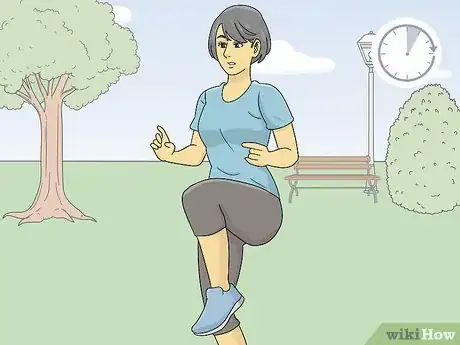


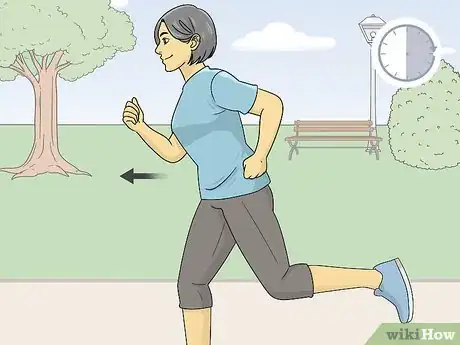

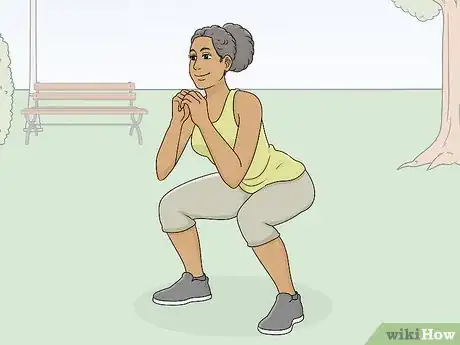


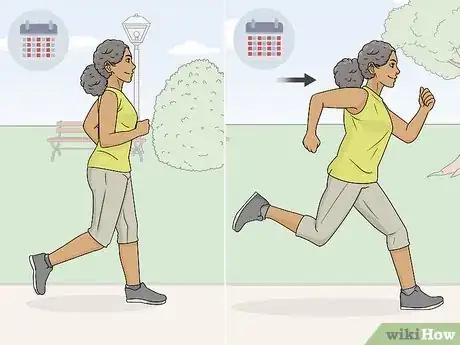












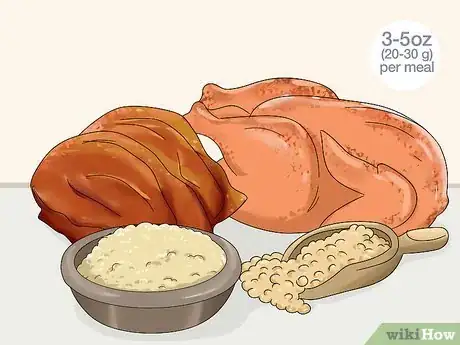




-Step-17-Version-2.webp)











-Step-17-Version-2.webp)



































